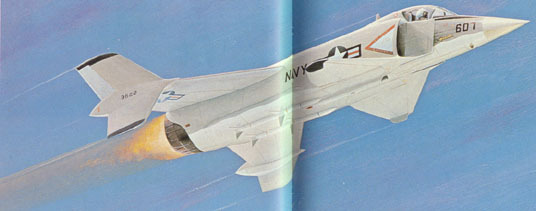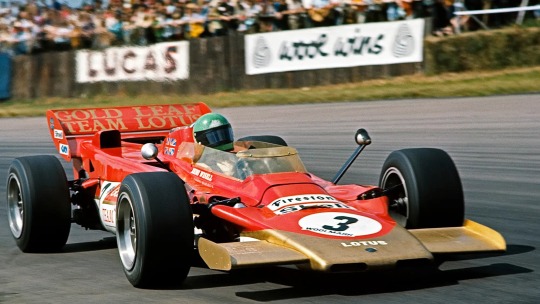#Pratt & Whitney
Text

"The Saturn I S-IV stage (second stage) for the SA-7 mission being prepared for shipment to Cape Canaveral, Florida. The S-IV stage had six RL-10 engines, which used liquid hydrogen and liquid oxygen as its propellants, arranged in a circle. Each RL-10 engine produced a thrust of 15,000 pounds for a total combined thrust of 90,000 pounds. The SA-7 mission was launched on September 18, 1964 from Cape Canaveral, Florida, and its S-IV stage made the second orbital flight."
Date: January 8, 1964
NASA ID: link
#AS-102#SA-7#Saturn I#Saturn I Block II#Rocket#NASA#Apollo Program#S-IV#Pratt & Whitney Rocketdyne RL-10#RL-10#Douglas#California#January#1964#construction#my post
187 notes
·
View notes
Text

Pratt & Whitney J58 Turbojet. It Powered The Record-Breaking SR-71 Blackbird.
➤➤ PRATT & WHITNEY - VIDEO: https://youtu.be/jxyydqL2NpE
#pratt & whitney#j58#turbojet#engineering#history#aviation history#world record#record breaking#youtube#aircraft#airplane#aviation#dronescapes#military#documentary
88 notes
·
View notes
Text

Rockwell XFV-12A

Rockwell XFV-12A
by Alex Stoll

Around 1970 the Navy could not see how it was going to be able to replace its old Essex and Midway carriers with Nimitz-class supercarriers. Admiral Elmo Zumwalt directed a study of alternatives which resulted in the Sea Control Ship (SCS), a mini-carrier equipped with V/STOL fighters and ASW aircraft. The USN invited manufactures to propose demonstration programs for a new aircraft, called the V/STOL Fighter Technology Prototype, to replace the outdated Harrier and serve on the SCS or other ships much smaller than conventional carriers: BAe and MD proposed an improved Harrier and a supersonic Harrier with a PCB (Plenum-Chamber Burning) engine; Boeing and Northrop proposed jet-powered tail-sitters; Lockheed-California proposed a propeller-driven tail-sitter; and Rockwell proposed a canard-delta aircraft powered by a large and enormously powerful engine that used the ejector-lift system for V/STOL. The Navy awarded the contract to Rockwell in 1972, instead of choosing designs based on proved technology, and the XFV-12A designation (twelth in the V series, not in the F series; the F-12 was the interceptor verison of the Blackbird) was allotted. Even though the forward fuselage and landing gear of the A-4 and the wing box, air intakes, and fuel tanks of the F-4 were used to speed the program up, it still ran far behind schedule. The prototype was rolled out in December 1976 and the first flight was scheduled for 1979.

Engine Configuration
For takeoff and landing, the entire engine was ducted to hollow-section "ejector flaps" (also called augmentor flaps) out along the wings and the canard by pilot command via a diverter valve box. The high-energy hot gas forced fresh air from above through the ejector flaps at a ratio of 7.5:1 to boost thrust by 70 percent. The ejector flaps could be raised or lowered to provide a smooth transition from vertical to horizontal flight or vice versa. After the XFV-12A's cancellation, de Havilland Canada designed an aircraft with ejectors build into the roots of a delta wing. GD incorporated their concept into the E-7, a F-16-based delta-winged STOVL aircraft. DHC built a large powered model and tested it in 1987. The EL system was large and control was difficult as a result of the large air mass moving through the wing root during transition, and nothing came of it (though not because the EL couldn't produce enough thrust as in the XFV-12A's case) despite the attractive low exhaust velocity.

Cancellation
Rockwell and Pratt & Whitney experienced several major technical problems, and the thrust boost from the ejector flap system was never as large in the full-scale aircraft as predicted from data collected by test rigs and sub-scale models; the XFV-12A could not leave the ground. Eventually funding dried up, the SCS was canceled, and the program proved a disappointment; however, in most future ASTOVL programs, large-scale powered models were used because of the experience gained in the XFV-12A program.

123 notes
·
View notes
Photo

Corsair Close Up
#F4U-5N#Pratt and Whitney#Chance Vaught#F4U#Corsair#Warbird#Planes of fame#Fighter aircraft#Flying#Aviation
539 notes
·
View notes
Link
Stop the war machine
#Canada#Toronto#Pratt & Whitney#military#arms manufacture#exports#Gaza#Palestine#genocide#war crimes#Israel#picket#union#workers#protest
5 notes
·
View notes
Text

Reine Wisell (Gold Leaf - Lotus 56B Pratt & Whitney) Grand Prix de Grande-Bretagne - Silverstone 1971. © Bernard Cahier ! Getty. - source Carros e Pilotos.
11 notes
·
View notes
Text

Yummy, engine in a can!
Back in the day one of the ways they stored and transported new engines like this Pratt and Whitney Wasp Major radial was just like this in massive metal barrels.
I believe some turbojet engine manufacturers still do this, I've seen similar containers with spare jet engines for various types of older jet aircraft laying around a few airports here and there.
#planeposting#planes#aviation history#avgeek#engines#radial engine#pratt and whitney#pratt and whitney wasp major#aviation archive
13 notes
·
View notes
Photo

Pratt and Whitney, 1984
35 notes
·
View notes
Text

Once in a lifetime photo
4 notes
·
View notes
Text
One fifth of Indian fleet commercial fleet is grounded at the moment
The year 2023 was the best ever for Indian aviation, when it clocked the highest ever domestic traffic in history. However, this has come against all odds – literally. Data released by the Government of India in Rajya Sabha – the upper house of Indian parliament shows that 157 aircraft are currently grounded due to engine or other issues. A significant number of these, i.e. 101 are grounded…

View On WordPress
#Engine issues ground IndiGo#Go FIRST groundings#Indian aviation grounded#IndiGo groundings#Pratt & WHitney issues
0 notes
Text
FAA Issues Emergency Grounding of Boeing 737 Max Planes After Mid-Air Engine Failure
Title: FAA Issues Emergency Grounding of Boeing 737 Max Planes After Mid-Air Engine Failure
Introduction:In a recent development, the Federal Aviation Administration (FAA) has taken decisive action by issuing an emergency order to ground 171 Boeing 737 Max planes in the United States. This decision comes in the wake of a mid-air engine failure on a United Airlines flight, which resulted in two…

View On WordPress
#Aviation safety#Denver to Honolulu flight incident#FAA emergency grounding#Mid-air engine failure#Pratt & Whitney PW4000 engines
0 notes
Text

"This drawing clearly shows the comparative sizes of the rocket engines used to launch the Saturn vehicles. The RL-10 and the H-1 engines were used to launch the Saturn I rockets. The J-2 engine was used on the second stage of Saturn IB and the second and third stages of Saturn V. The F-1 engine was used on the first stage of the Saturn V."
Date: January 30, 1963
NASA ID: 9903406
#Pratt & Whitney RL10#RL10#Rocketdyne H-1#H-1#Rocketdyne J-2#J-2#Rocketdyne F-1#F-1#Rocket Engine#Saturn I#Saturn I Block II#S-I#S-IV#Saturn IB#S-IB#S-IVB#Saturn V#S-II#S-IC#Rocket#NASA#Apollo Program#1963#my post
56 notes
·
View notes
Text

Pratt & Whitney F119 Engine Powering The F-22 Raptor.
➤➤ PRATT & WHITNEY PART 2: https://youtu.be/u0csHkmgYIo
#pratt & whitney#turbojet#turbofan#jet engine#afterburner#aviation pioneer#youtube#aircraft#airplane#aviation#dronescapes#military#documentary#aviation history#plane#military aviation#engineering#histroy
48 notes
·
View notes
Text
More Than 2 Dozen Jobs!
In my 76 years on this planet, I’ve worked no less than 2 doz jobs, ranging from short order cook, busboy, waiter, restaurant manager, truck driver, forklift driver, butcher, jewelry bench worker, and wiener clerk, to legal secretary, project manager, knowledge manager, and business manager.
I retired from Pratt & Whitney Rocketdyne, where I worked on the Space Shuttle Main Engine program for…

View On WordPress
#dignity#Happiness#labor#liquor store#Pratt & Whitney Rocketdyne#Rocketdyne#Space Shuttle Main Engine#SSME#supplemental income#Work
0 notes
Link
Follow the money
#Canada#Toronto#arms manufacture#Pratt & Whitney#profiteering#enablers#Gaza#genocide#ethnic cleansing#complicity#Palestine#protests
2 notes
·
View notes
Photo

Graham Hill (stp - Lotus 56 #3 Pratt & Whitney) 500 miles d'Indianapolis 1968. © IMS. - source Carros e Pilotos.
37 notes
·
View notes